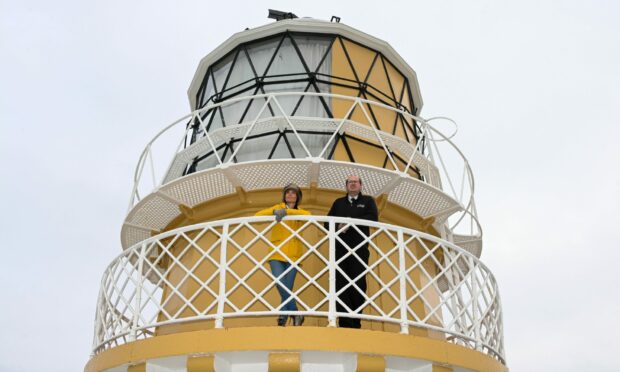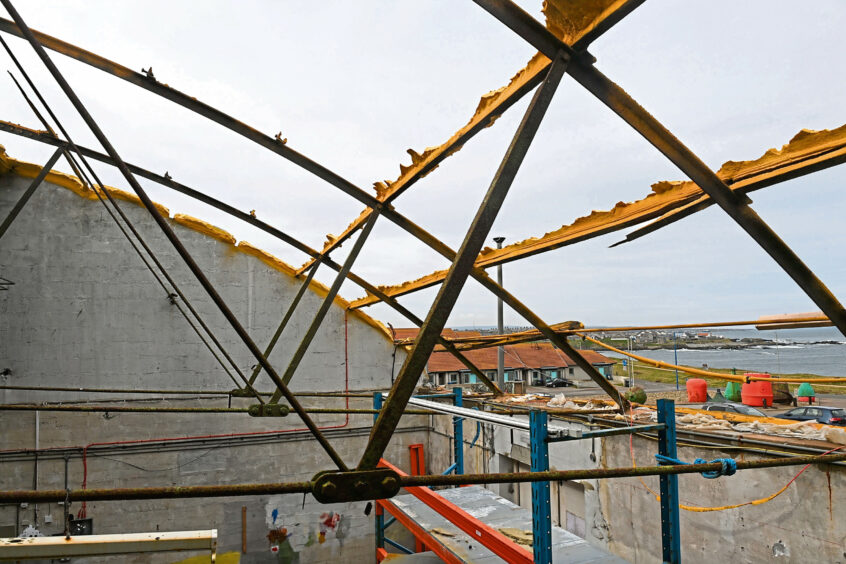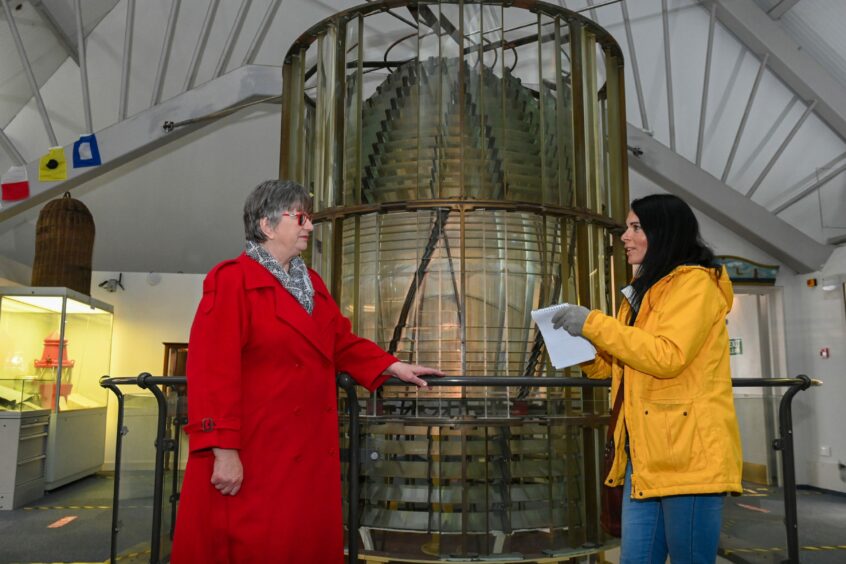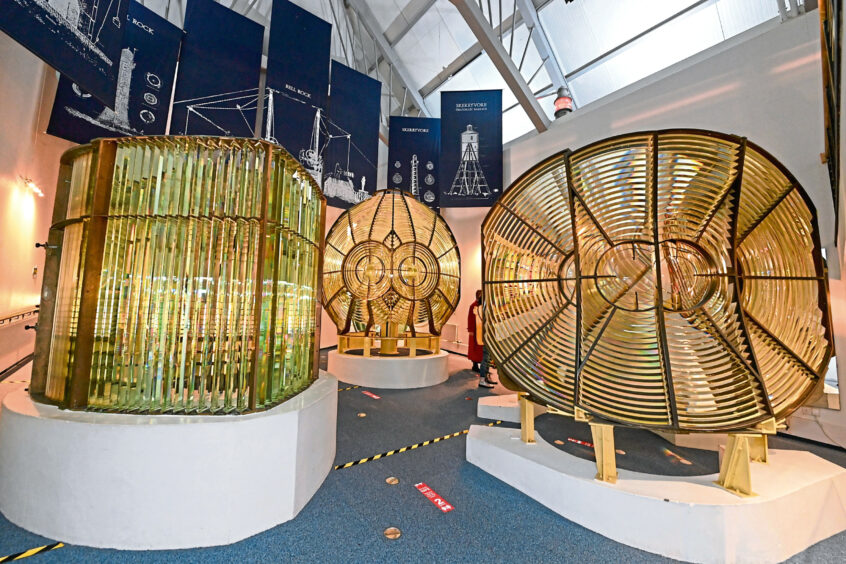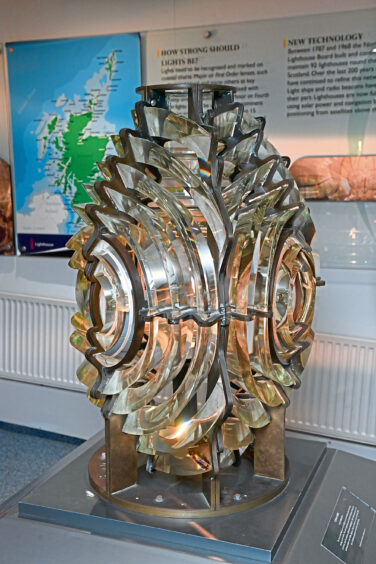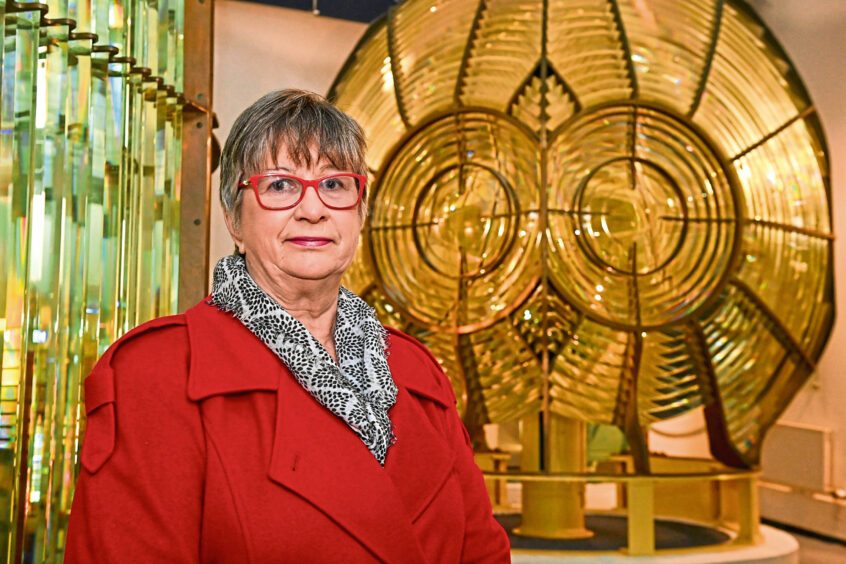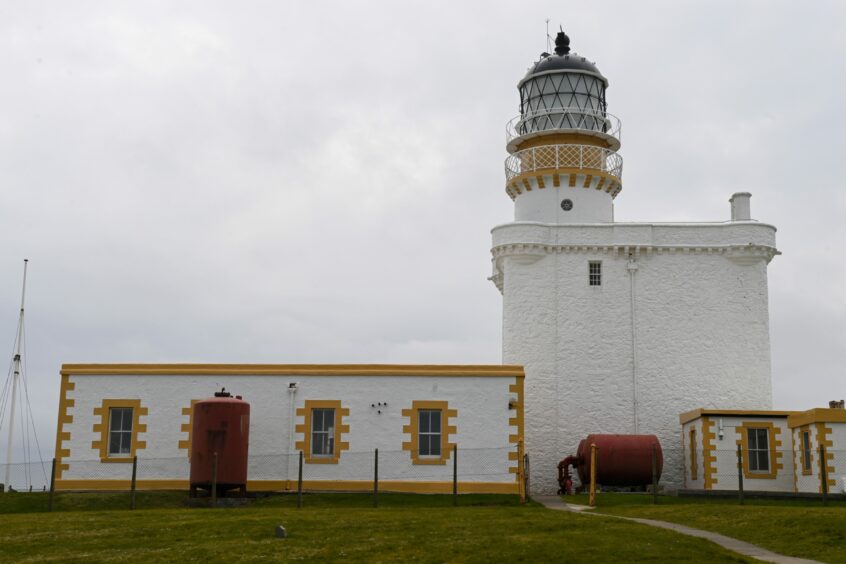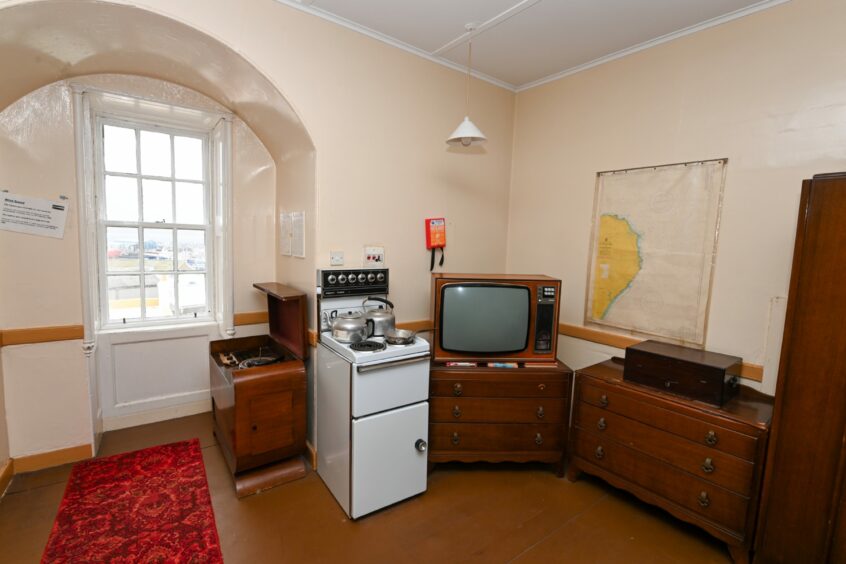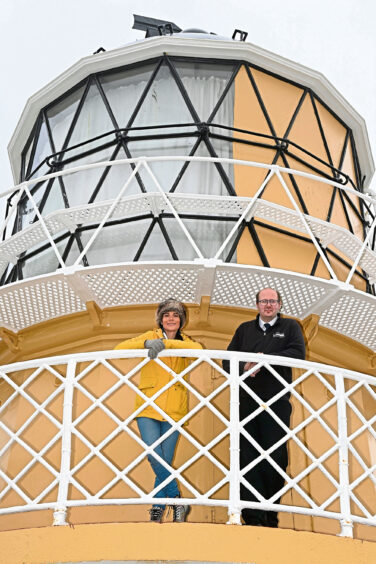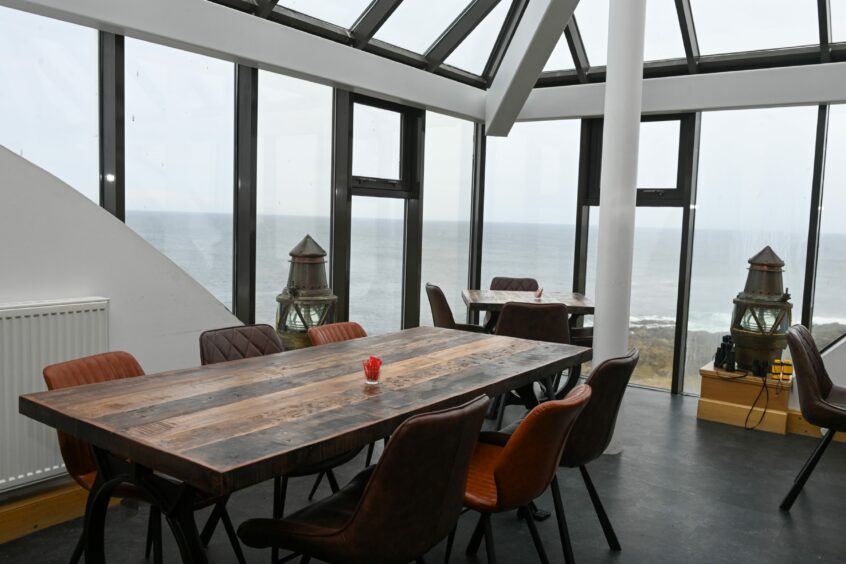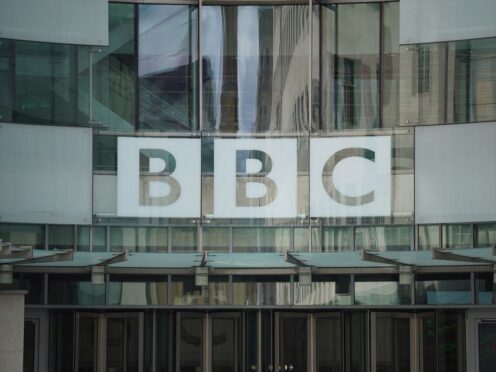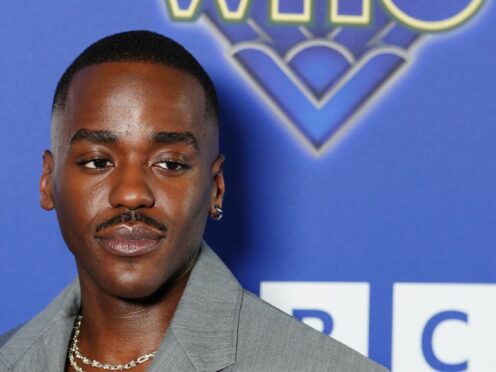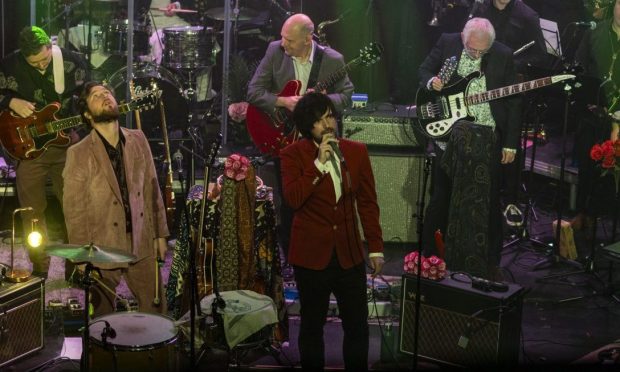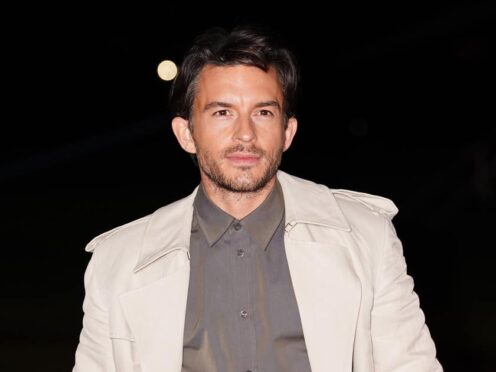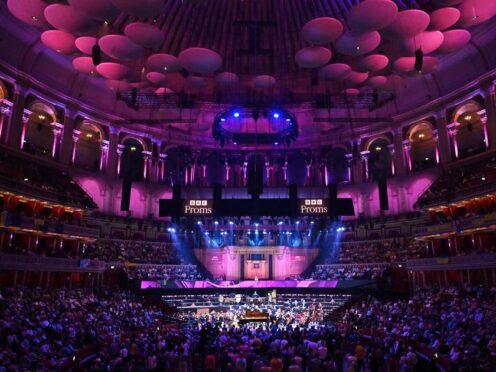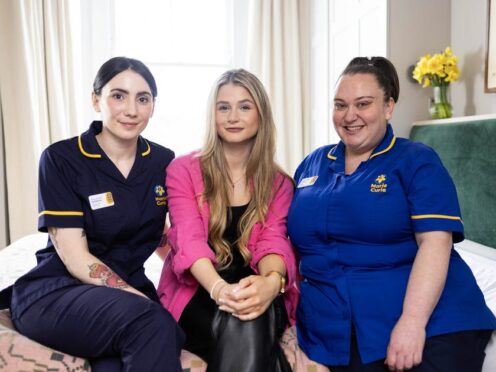The Museum of Scottish Lighthouses is rising like a phoenix from the ashes after being hit by Storm Arwen in November. Gayle paid a visit.
As the only dedicated lighthouse museum in the country, it’s a pretty special place.
So when Storm Arwen tore through Fraserburgh’s Museum of Scottish Lighthouses, ripping off the storeroom roof and exposing irreplaceable artefacts to the elements, manager Lynda McGuigan feared the worst.
The museum, which opened in 1995 and tells the story of the engineers who built the life-saving structures and the keepers who looked after them, has one of the world’s greatest collections of lighthouse memorabilia.
“The storm rolled the roof back like a tin of sardines and there was so much water-damage,” says Lynda. “I cried and had panic attacks wondering what to do. The whole collection was covered in salt, sea and sand.”
Lynda’s dread was soon replaced by hope as the community rallied together to rescue at-risk relics, moving more than 100 tonnes of exhibits.
Now, almost six months on, the museum is open to the public and Lynda is hugely excited about the future.
Big plans
“I’ve got big plans!” she beams. “It’s time we had a major refurbishment and look at fresh ways of displaying and interpreting artefacts. What’s happened, while devastating, is an opportunity for us to do something amazing.”
It’s the first time I’ve visited the museum and I’m blown away by the beauty – and size – of some of the historic lenses.
Not knowing much about naval navigation, I’m all ears when Lynda elaborates: “We’ve got the world’s largest collection of Fresnel lenses.
They may look aesthetically pleasing but they were designed to have two practical purposes – to produce a brilliant light, and as a means of creating a lighthouse’s ‘character’ or flash. The lights had to be distinguishable from one another.”
Among the lenses which most impress me are the 1908 Dunnet Head, the 1909 Neist Point, and the 1933 North Carr Lightship.
The latter two resemble owl’s faces, and the North Carr has a fascinating story – decommissioned in 1975 when an automatic lighthouse was built at Fife Ness as a replacement and the vessel then docked at Anstruther as a tourist attraction before being moved to its current home at Dundee’s Victoria Docks.
As well as lenses and machinery, the museum houses Northern Lighthouse Board (NLB) archives and items donated by keepers and their families.
Lynda breathed a huge size of relief when it was confirmed no lenses had been broken. However conservation work needs to take place on those blasted by saltwater before they could be transported – along with 400 boxes of artefacts and historic material – to a nearby warehouse.
Along with a haul of historic clocks, one of the most cherished items rescued from the storeroom, now on display in a glass cabinet, is Robert Louis Stevenson’s personal bible, annotated with his notes. (Stevenson hails from the famous lighthouse-building family.)
Kinnaird Head
The museum also offers tours of Kinnaird Head – Scotland’s first mainland lighthouse – which escaped automation and is preserved in time as a manned light.
Collections manager Michael Strachan, who’s written a book about the peculiar structure, takes me on a tour.
“It’s the only lighthouse in the world to be built into a castle!” he says.
“The castle was originally constructed in 1571 by Sir Alexander Fraser, playing host to lairds, lords and Jacobites before being abandoned in 1750.
It was saved from ruin in 1787 when the newly-formed NLB transformed it into their first Scottish lighthouse. Every Stevenson engineer visited and left their mark on the site, while a watch of keepers kept the light flashing for 200 years.”
With automation in 1991, there was a second abandonment of the old tower until it made its transition from lighthouse to museum in 1995.
The lantern is still in working order and the lighthouse remains much as its last crew left it. A small, unmanned light nearby now fulfils the role of beacon.
“One keeper described Kinnaird Head as being like a ‘five-star hotel’ compared to other lighthouses due to its location near Fraserburgh,” says Michael.
“The easy-going nature of the station – compared to rocks – made it the ideal place for trainees who had their own room inside the castle.”
It’s fascinating to explore what Michael refers to as the “occasional keeper’s room”, with bed, cooker, vintage telly and radiogram.
“It would’ve been a unique upbringing for keepers and their families but it’s a lost way of life,” he laments.
One keeper described Kinnaird Head as being like a ‘five-star hotel’ compared to other lighthouses due to its location near Fraserburgh.”
MICHAEL STRACHAN
Wine tower
My final treat is a tour of the nearby wine tower, thought to be the oldest standing building in Fraserburgh.
“It’s a mysterious building with no real recorded history,” says Michael.
In the 1990s it was believed to be a secret chapel for Sir Fraser’s wife because of a stone featuring symbols of the passion.
Other carvings adorn the ceiling of the upper chamber, which leads Michael to believe it was just another dwelling part of the castle. It also contains a fireplace and a 16th century latrine!
However, the wine tower has its very own legend. “The story goes that the Laird didn’t approve of his daughter’s boyfriend,” says Michael.
“He was so enraged that he locked her in the top chamber while the boyfriend, a piper, was chained in caves which filled with water and he drowned.
“The heartbroken daughter leapt from the tower, falling to her death on rocks. It’s said on foggy nights you can hear the piper playing for his lost love.”
Historic artefacts, mystery, intrigue and legend… you’re guaranteed a memorable experience at the museum and we look forward to what 2022 brings!
- The Museum of Scottish Lighthouses opened in 1995 when the automation of lighthouses was in its final phase.
- The initial plan was to display a small number of lenses and other small objects at the Kinnaird Head site in Fraserburgh but this scope was expanded when the Northern Lighthouse Board (NLB) reported it had dozens of redundant lenses lying in storage. lighthousemuseum.org.uk/
- The museum cafe has just had a major refurbishment – it’s well worth checking out.
-
The cafe has great sea views.
